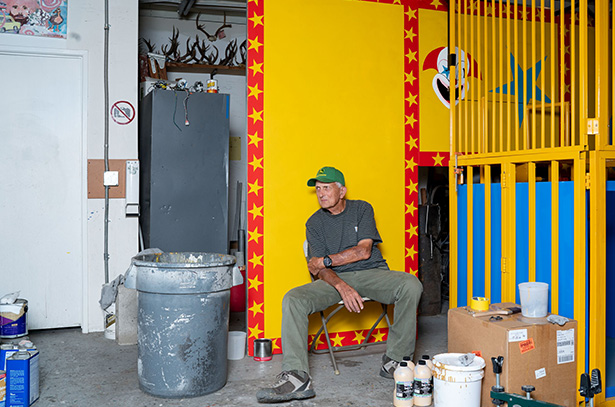
Richard Jackson
Accidents in Abstract Painting
22 March - 10 May 2003
Zürich
About the Artist

Richard Jackson
A pre-eminent figure in American contemporary art since the 1970s, Richard Jackson is influenced by both Abstract Expressionism and action painting, exploring a performative painting process which seeks to extend the potential of painting by upending its technical conventions. Born in Sacramento, California in 1939, Jackson first came to international attention with a major presentation of his installation works at the Menil Collection, Houston, in 1988, followed by the 1992 exhibition, ‘Helter Skelter,’ at the Los Angeles Museum of Contemporary Art.Jackson’s work is process-oriented, and the structural aspect of his installations involves a high level of craftsmanship and engineering. However, the final application of paint is generated through an automated process which Jackson calls ‘activation.’ He equips his ‘painting machines’ with a network of pipes and hoses which, when deployed, cause violent eruptions of paint that immerse the work and surrounding area. The finished installations remain in the aftermath of this extreme and unpredictable performative action.
Jackson responds to the high-mindedness of painterly practice by repositioning painting as an everyday experience. For Jackson, paint is not a tool used to create a representational image, but is used as a ubiquitous liquid which is spurted, splattered and sprayed over the surface of his installations.
He draws on the visual lexicon of domestic environments, universal basic human activities, and hallmarks of the quintessential American life such as hunting and sports. By harnessing this imagery and combining it with a physically laborious and conceptually rigorous artistic practice, Jackson has produced a body of work that questions and challenges the structure of the art world at large for over four decades.
Current Exhibitions
1 / 12











